
"Dan Suzio has an astounding ability to capture movement, natural situations, and spontaneous action while also achieving the artistic composition, color, and sharpness of detail I associate more with studio work."
- Dan Rademacher, former editor of Bay Nature Magazine

Grant's Zebra
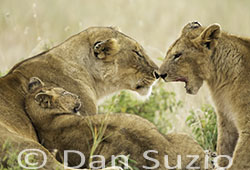
African Lion
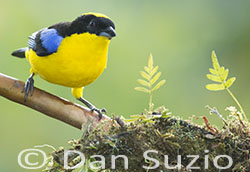
Blue-winged Mountain Tanager
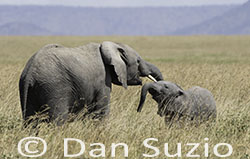
African Elephant
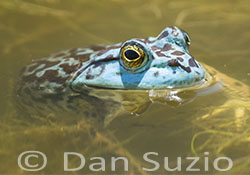
Blue American Bullfrog
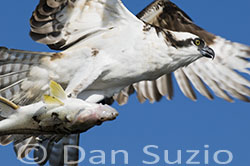
Osprey
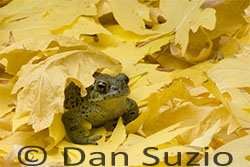
California Toad
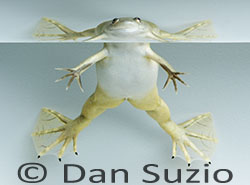
African Clawed Frog

Western Grebes
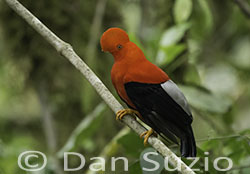
Andean Cock-of-the-Rock

Leafcutter Ants
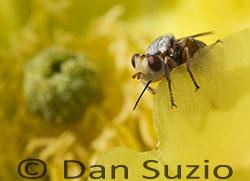
Thick-headed Fly
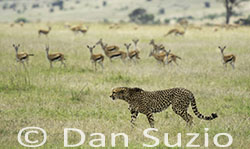
Cheetah

Tokay Gecko
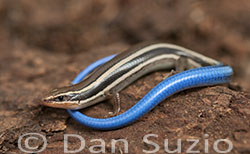
Skilton's Skink

Mojave Fringe-toed Lizard
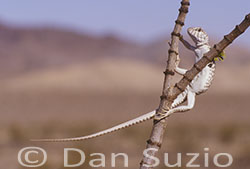
Desert Iguana
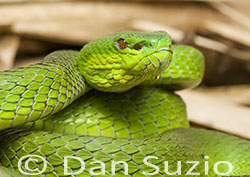
Sunda Island Pitviper
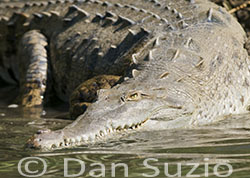
American Crocodile
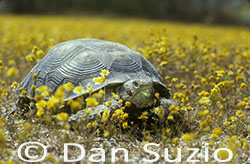
Desert Tortoise
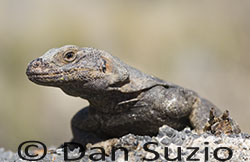
Chuckwalla
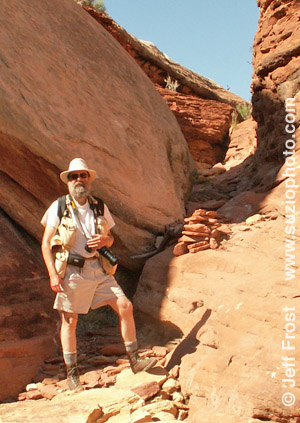
Welcome!
Since 1978, I've been providing wildlife, nature, and travel photography for books, magazines, calendars, brochures, museum exhibits, advertising, and a variety of other uses in print and online.I started out by specializing in frogs, snakes, lizards, and other small critters, and have since expanded my subject matter to include all kinds of wild animals, plants, locations, and even people. In my online catalog you'll find photos of wildlife, plants, landscapes, and people from locations on five continents. Every wildlife photo is captioned and keyworded with common and Latin names, location, behavior, Federal and State endangered status, and other relevant information.
The quote above is especially meaningful to me because it describes my goal in every photo. I'm always looking for a strong composition that will capture the spirit of the individual as well as the species or location. I often think of myself as a portrait photographer, using the same techniques of lighting, composition, and color to reveal a glimpse of each subject's personality. When composing and cropping I believe that every pixel counts; no background detail is so small that it can't add to - or detract from - the overall impact of the photo.
For a little more insight into my work, read the excerpt below from an article in Rangefinder Magazine.
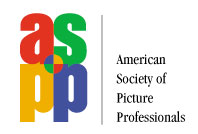


Photographer Dan Suzio:
Frogs and Snakes and Bugs, Oh My!
By P.J. HellerRangefinder magazine, June 2001
Note: This article was written at a time when I was mostly a reptile and amphibian photographer. I've since branched out to include many other subjects, but it sill provides a good description of who I am and how I approach my subjects.
As a youngster in Northern California, Dan Suzio used to chase after snakes, frogs and assorted bugs.
As an adult, he’s doing the same thing, only this time with a camera in his hand.
Suzio describes his photography specialty as "snakes, frogs, bugs, and other creepy stuff."
No annual reports or corporate suits for this photographer, whose interest in nature and photography dates to his childhood.
"All those years as a kid catching frogs and lizards and snakes kind of paid off," said Suzio, who operates Dan Suzio Photography in Berkeley, California.
Suzio had planned to be become a biologist. But after less than a year of college at the University of California at Berkeley, he decided to drop out and take a break from school. Although he planned to return to school after a few years off, he never went back.
But his love of nature and the outdoors and his interest in photography didn’t wane and gradually led him to combine those interests into a career. He managed to interest a stock photo agency in his work and his photos began selling.
His background in biology has served him well. So have his days as a youngster chasing frogs and snakes and bugs.
"It’s given me the patience and knowledge of reptiles’ behavior that it takes to be able to approach them closely," he said.
"I’ve had cases where I’ve spent an hour or more approaching a lizard and end up with my camera three inches from its face and it’s just sitting there looking at me," he recalled.
"I don’t know how much conscious thought a reptile is capable of, but I imagine it’s sitting there thinking, ‘What the hell is this,’" he said with a laugh.
As for captions, the words attached to an image can often make or break the sale, Suzio noted.
"Complete and accurate captions won’t make a bad photo marketable, but without them a good photo can be useless," he pointed out. "A caption that says ‘bee on cactus flower, Mojave Desert’ isn't good enough for the textbook market, but the same photo labeled ‘honeybee, Apis mellifera, with pollen on legs and head, on flower of beavertail cactus, Opuntia basilaris, in upper Thousand Palms Canyon, Joshua Tree National Park, California’ might be just what the editor is looking for.
"Doing this requires that you be a naturalist, in the 19th century sense of the word," he said. "You need to know some biology, some botany, some ecology, some geology, a little chemistry, and you need to spend as much time researching and captioning as you do shooting.
"My bookshelves are overflowing, not with photography books, but with science textbooks and field guides," Suzio noted.
From a photo standpoint, Suzio has captured images of reptiles and plants using minimal equipment. Most of his work is done outdoors, although some work requires that photos be taken in the studio -- or on the kitchen table or over the sink.
"In some cases it’s impossible to shoot in a natural setting," he said. "You’re not going to get a close-up of the different stages of development of a tadpole just by sticking your camera into a creek. You have to temporarily scoop them out of the creek and put them in a little aquarium and then light it to avoid reflections."
In the field, he’ll use fill flash to cut down on shadows or a reflector. In the studio, he’ll use one or two handheld strobes, sometimes bounced through a small softbox, and reflectors.
"I do set up a lot of reflectors (in the studio)," he said. "I don’t like the harsh lighting I see in a lot of reptile photos. I try to make the lighting as natural as possible."
Lighting creepy crawly creatures isn’t always easy, he added.
"Amphibians are wet and they need to stay wet when you’re working with them, even if you bring them into the studio. That makes for all kinds of problems with reflections and highlights," he said.
Snakes with their shiny skins create reflection and contrast problems. And lizards, while not shiny or wet, are often out when the sun is harsh, creating hard lighting effects.
"When I’m out shooting in the field, I like to use whatever’s around to soften the light," Suzio said.
That may mean using rocks to frame the picture or a branch or leaves to create a more dappled lighting effect.
Understanding an animal’s behavior is also important in order to get close enough to get a photo and to ensure that the photo accurately depicts the animal’s activities, Suzio noted.
"With reptiles, they know you’re there," he said. "It’s more a matter of not being a threat because of your own behavior. If you act like a rock, a lizard is not going to be afraid of you. If you act like a coyote, the lizard will be gone before you have a chance to make a picture."
"I enjoy the isolation, the solitude of getting out, shooting out in wilderness, even if it’s just three miles from my house," he said.
P.J. Heller is a freelance photojournalist based in Santa Barbara, Calif. He can be reached via e-mail at pjheller@west.net. This article first appeared in Rangefinder Magazine, June 2001. Copyright 2001 by P.J. Heller. All rights reserved.
